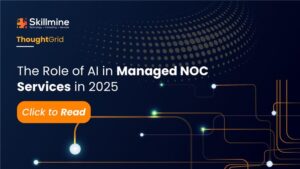The post COVID-19 world has led corporations to run helter skelter to simplify identity & access management.
When the entire office went remote, in a matter of days, the Chief Information Officer and the Chief Security Officer were in such a hurry to get things working that they granted identity and access to several applications without realising that only ten percent of employees needed access to such applications. Therefore, it’s paramount that digital identities for productivity and development are carefully deployed by every modern enterprise.
C-Suite leaders have soon realised that access management if not managed well becomes a security risk, as information was being misused & in many cases made employees unproductive. There was a wastage of IT resources to managing these permissions and tracking progress and it became an IT manager’s nightmare.
However, things changed rapidly, CISOs began to do the following.
- Narrowed down permissions and found out how those permissions were being used.
- They worked with tools that identified run time identity in an authenticated & real time manner.
- They began to audit the access because 90 percent of permissions were not being used.
- They began to identify how new users in their organisation were represented online. They defined access to the right infrastructure.
- Password management, alleviating identity silos and securing APIs became a priority.
- Strong authentication and access to specific applications became more defined.
These became the calling cards for access management at scale.
Identify federations: why they are important for access management?
Identity federation means two parties have to create trust while authenticating users to access resources. To explain this further Federated Identity Management (FIM) is a system of trust where a Service Provider (SP) and an external party or Identity Provider (IdP) work together on the authentication process.
In this system the user doesn’t need to login with credentials in every step because their details are stored with the IdP.
Here the IdP authenticates the user and sends the information to the SP. With defined access the user can access multiple applications with a single login.
This allows companies to track their employees and sub-vendors at any given point of time.
Benefits of identity and access management
The foremost benefit is to save time on administration costs as these are unforeseen expenses. An identity and access management system allows continuation of work by identifying the right groups by editing access and can customise everything based on priority and needs.
Since access rights are controlled there is enhanced security. Here continuous monitoring by integrating authentication systems is key to managing security flaws and identifying origin of the problems. This ensures business continuity and productivity.
The organisation can also come to enjoy reduced service costs. Investing in an identity and access management system will make sure the organisation is future ready for scale. A good IAM system ensures there are no frauds and ensures compliance, which basically means a company doesn’t have to pay millions for non-compliance.
A good IAM automates processes of signing in. Such a system provides control to administrators and flexibility to users.
Finally, information sharing is easy because of a common platform. It is easy to find files and share information with every stakeholder with ease.
One must note that all these solutions and advantages apply to even mobile devices in every industry.
A IAM can create a good mobile device management process. A CISO can decide what type of apps need to be blocked and what time can be spent on an app. In short the device can be blocked remotely too. This is highly effective for business.
Finally, according to Grand View Research the global identity and access management market size was valued at $15.93 billion in 2022 and is projected to expand at a compound annual growth rate (CAGR) of 12.6 percent from 2023 to 2030.
Identity and access management (IAM) assures that the appropriate person and job position (identities) in an organisation have access to the tools they need to perform their duties. Identity management and access systems allow companies to administer employee apps without logging in as an administrator to each app.
Advances in the internet of things (IoT) and artificial intelligence (AI), rising awareness about regulatory compliance management, increasing reliance on digital platforms & automation, and growing adoption of cloud technologies across industries are estimated to drive the market over the forecast period.
No wonder in this new world view of multiple logins and workloads simplifying identity and access management is key to the growth of the Corporation.
Looking for expert technology consulting services? Contact us today.





